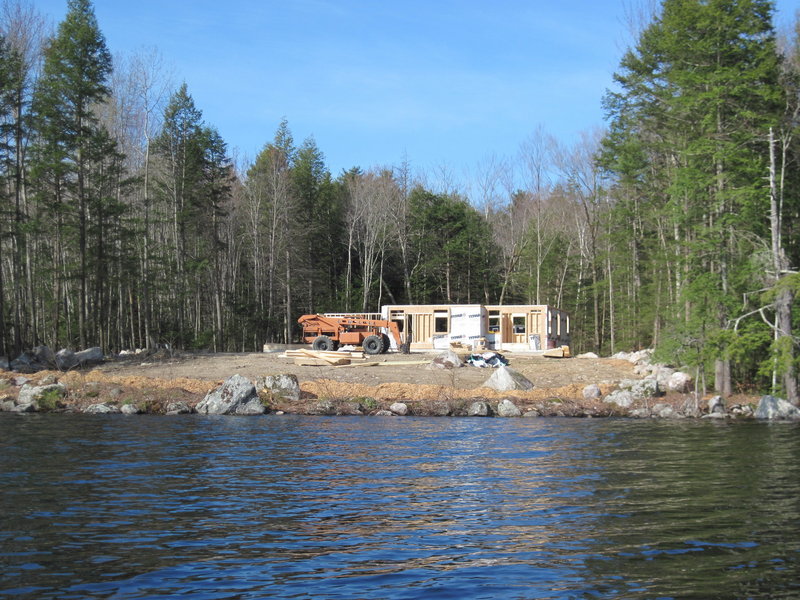The clearing of a swath of woods along Long Lake in Naples opened up an unobstructed view of the water. It also was a “very egregious” violation of local shoreland zoning that warrants a mitigation plan and fines, says the state Department of Environmental Protection.
The parcel is owned by Chase Holdings LLC, a trust associated with John Chase, a well-known builder in southern Maine who runs Chase Custom Homes.
The DEP and Naples’ code enforcement officer began investigating the clearing off Big Bear Point last month. They found that in an area of more than 100 feet by 100 feet, all of the trees and most of the ground cover had been removed, according to an April 1 letter to the town from Mike Morse, an assistant shoreland zoning coordinator for the DEP.
Naples’ shoreland zoning strictly limits tree cutting and the removal of low plants or other ground cover within 100 feet of the shore.
Morse recommended a remediation plan that includes planting at least one tree per 80 square feet, the replacement of the ground cover with at least 4 inches of a commercially available product, and new shrubs and other low plants. He also recommended that the town impose a fine of $20,000 to $40,000.
Similar clearings have drawn fines of $20,000 to $75,000, said Donna Gormley, a DEP spokeswoman.
Morse also recommended that the town require training on shoreland zoning and related laws for workers at sites run by Chase Custom Homes.
The Lakes Environmental Association argues that the proposed remediation plan doesn’t go far enough to restore trees and plants — an important protection for the lake’s health.
Among the organization’s concerns are that the heights of the replacement trees — 3 feet for hemlocks and 6 feet for hardwoods — would be too low and there would be no prohibition against trimming the hemlocks to keep them at 3 feet.
The association’s executive director, Peter Lowell, said his organization will suggest a remediation plan to Naples’ selectmen tonight.
Selectmen will be briefed on the situation and determine where their responsibilities lie, said Town Manager Derik Goodine. The shoreland zoning is mandated by the state, but towns interpret and enforce the law.
Chase Holdings has agreed to the remediation plan, and a contractor is expected to start putting in plants next week, said Michael Lane, lawyer for Chase Holdings. But Lane said the range of fines suggested by the DEP is out of line with the nominal fines Naples has imposed in similar cases.
The clearing was a result of poor communication and inadvertent error, Lane said.
The contractor who was to clear the area for the foundation mistakenly cleared the larger area, Lane said.
He said he never asked who the contractor was because the shoreland zoning ordinance holds the landowner responsible. “We admit it was a screw-up,” he said. “We’re doing everything we can to fix that as quickly as we can.”
John Chase could not be reached for comment.
Trees and plants protect the lake from stormwater, which picks up phosphorus as it runs toward the shore, Lowell said.
Phosphorus increases the amount of algae in a lake, which depletes oxygen as it dies and decomposes, Lowell said. Low oxygen levels can lead to a release of phosphorus from the bottom sediment — which can lead to excess algae on the surface and harm cold-water fisheries, he said.
Staff Writer Ann S. Kim can be contacted at 791-6383 or at:
akim@pressherald.com
Send questions/comments to the editors.


